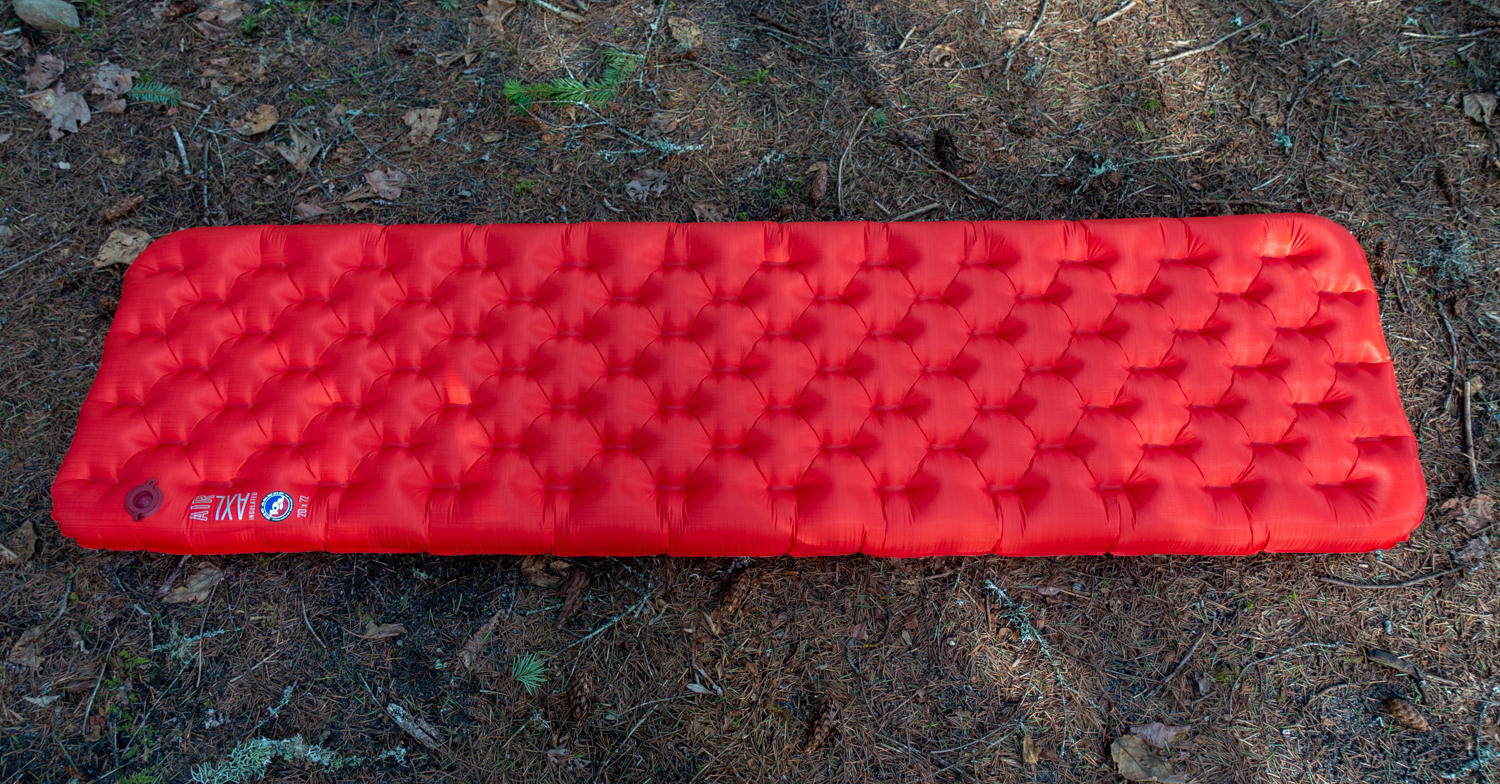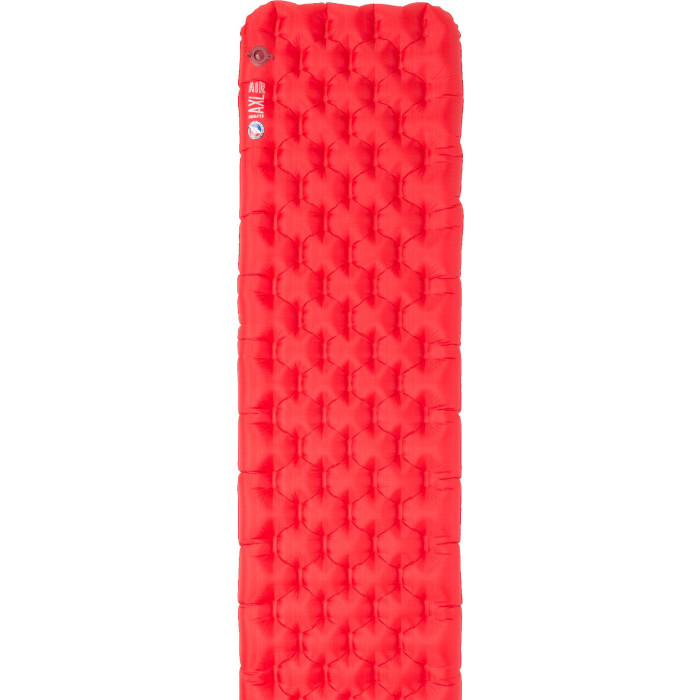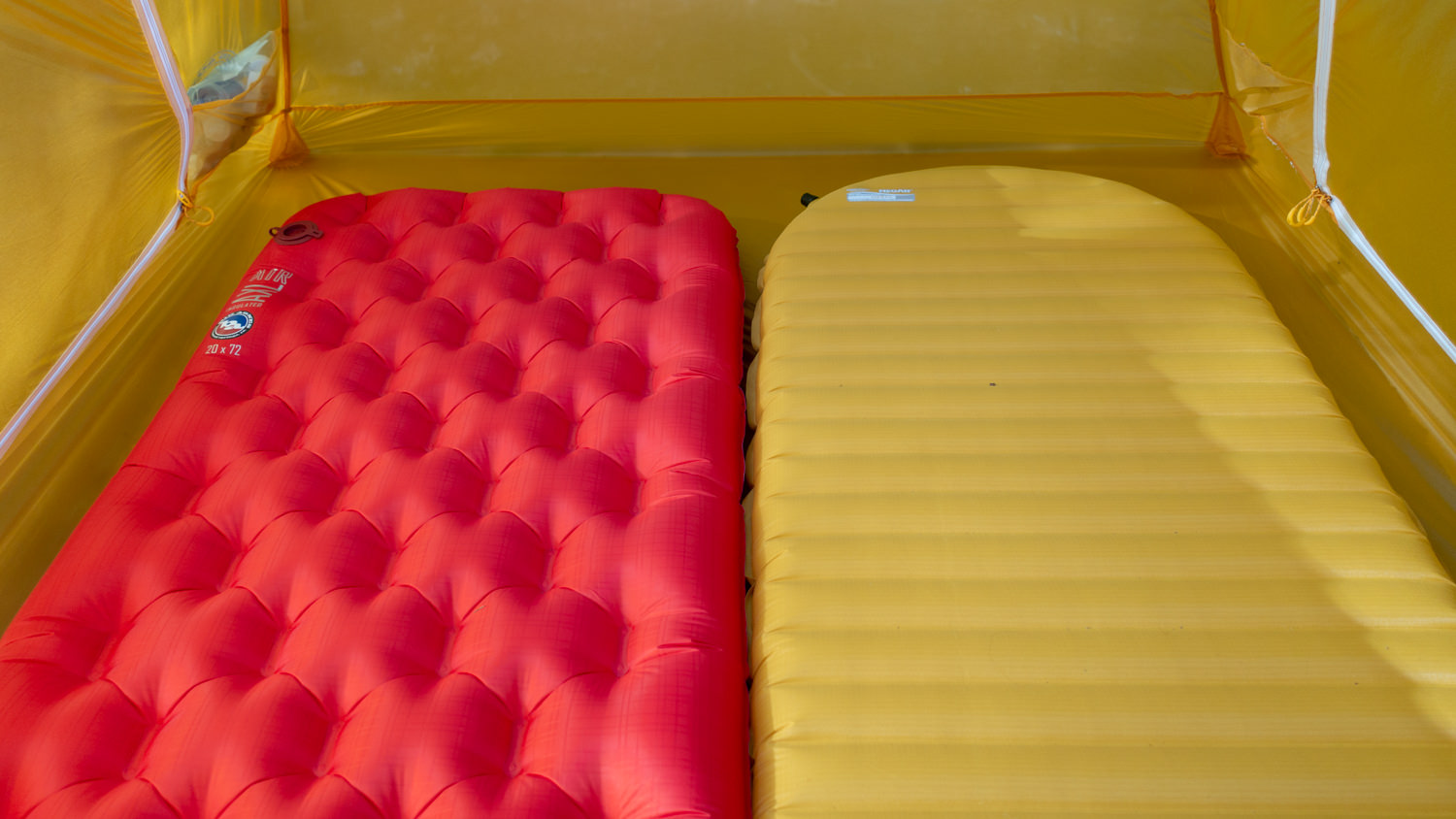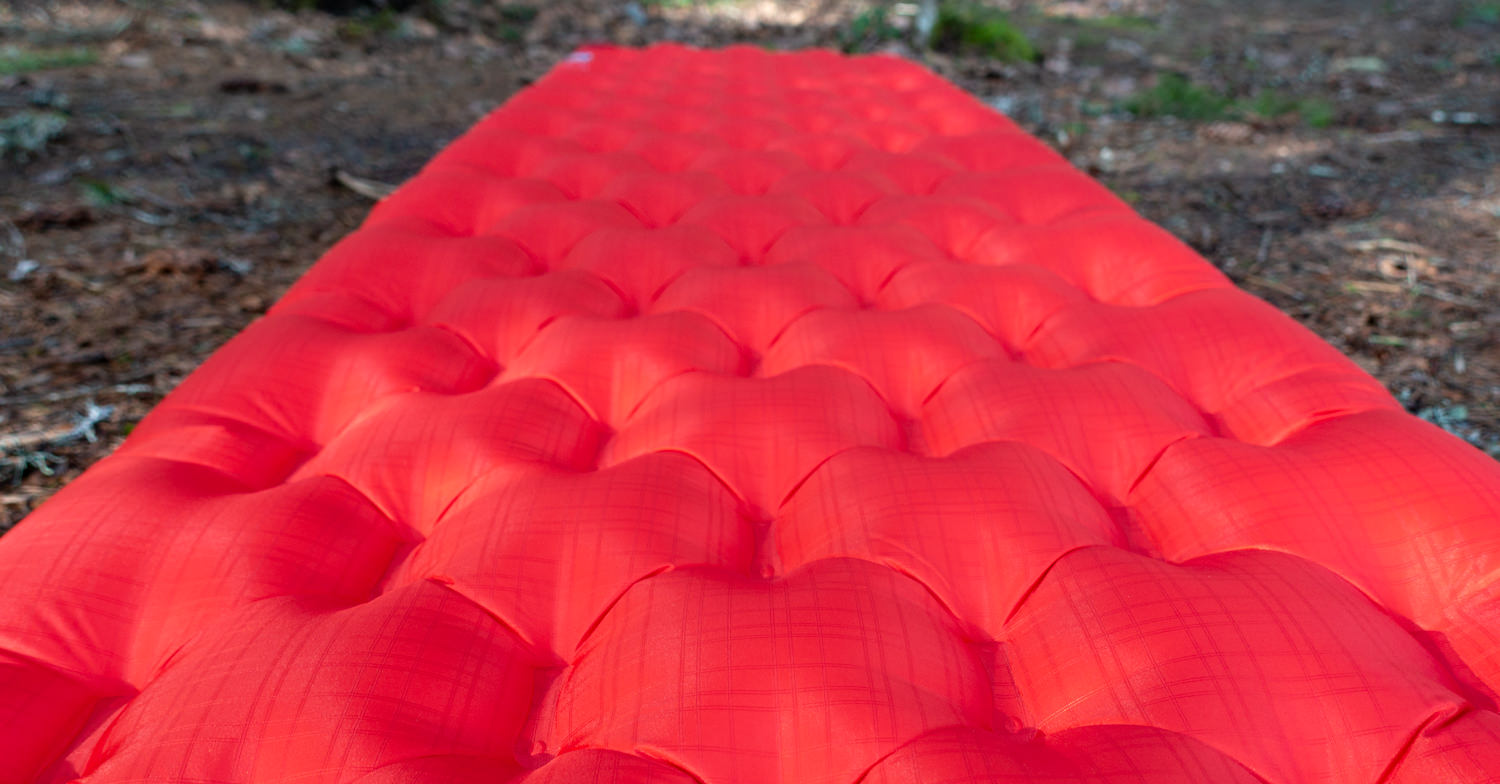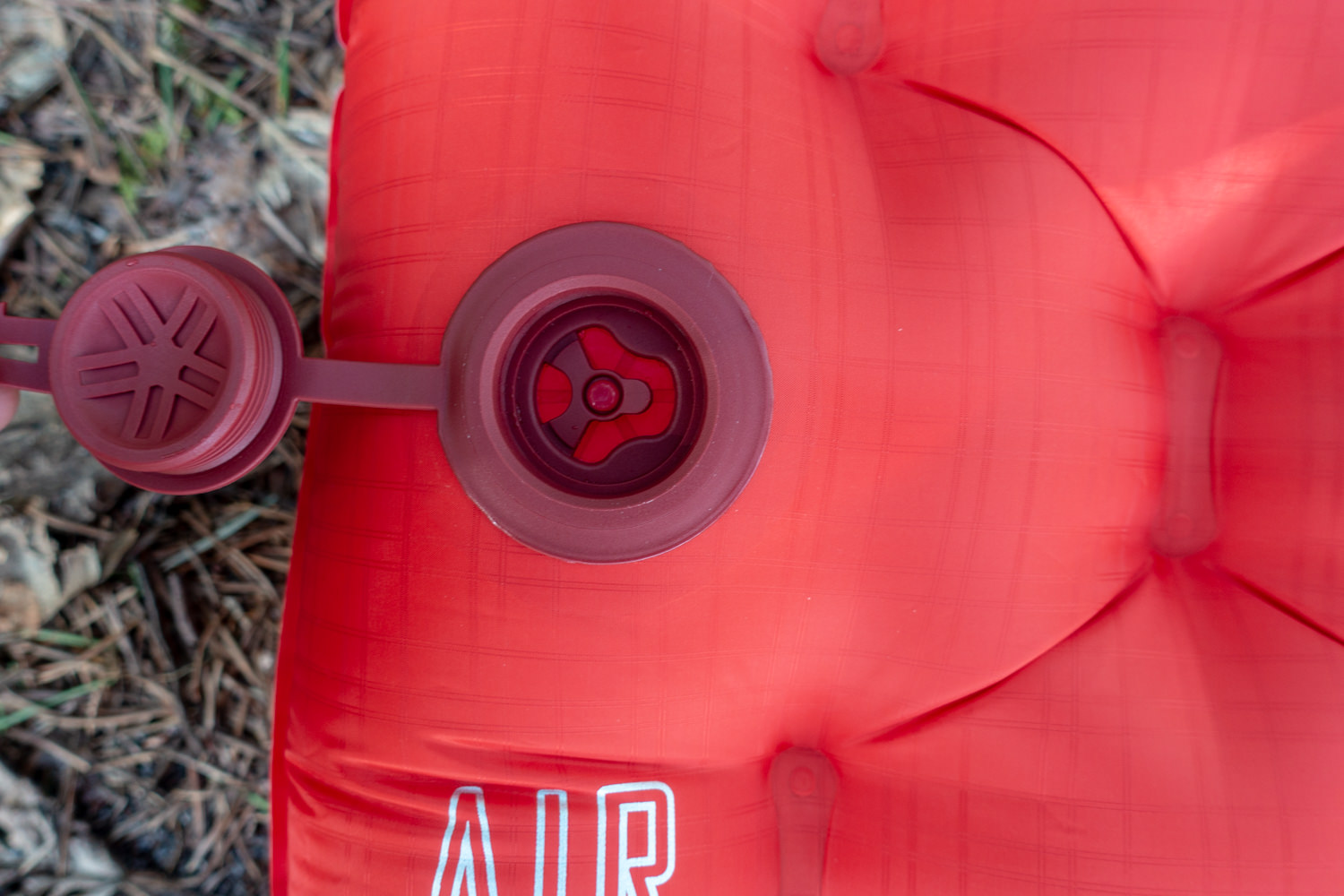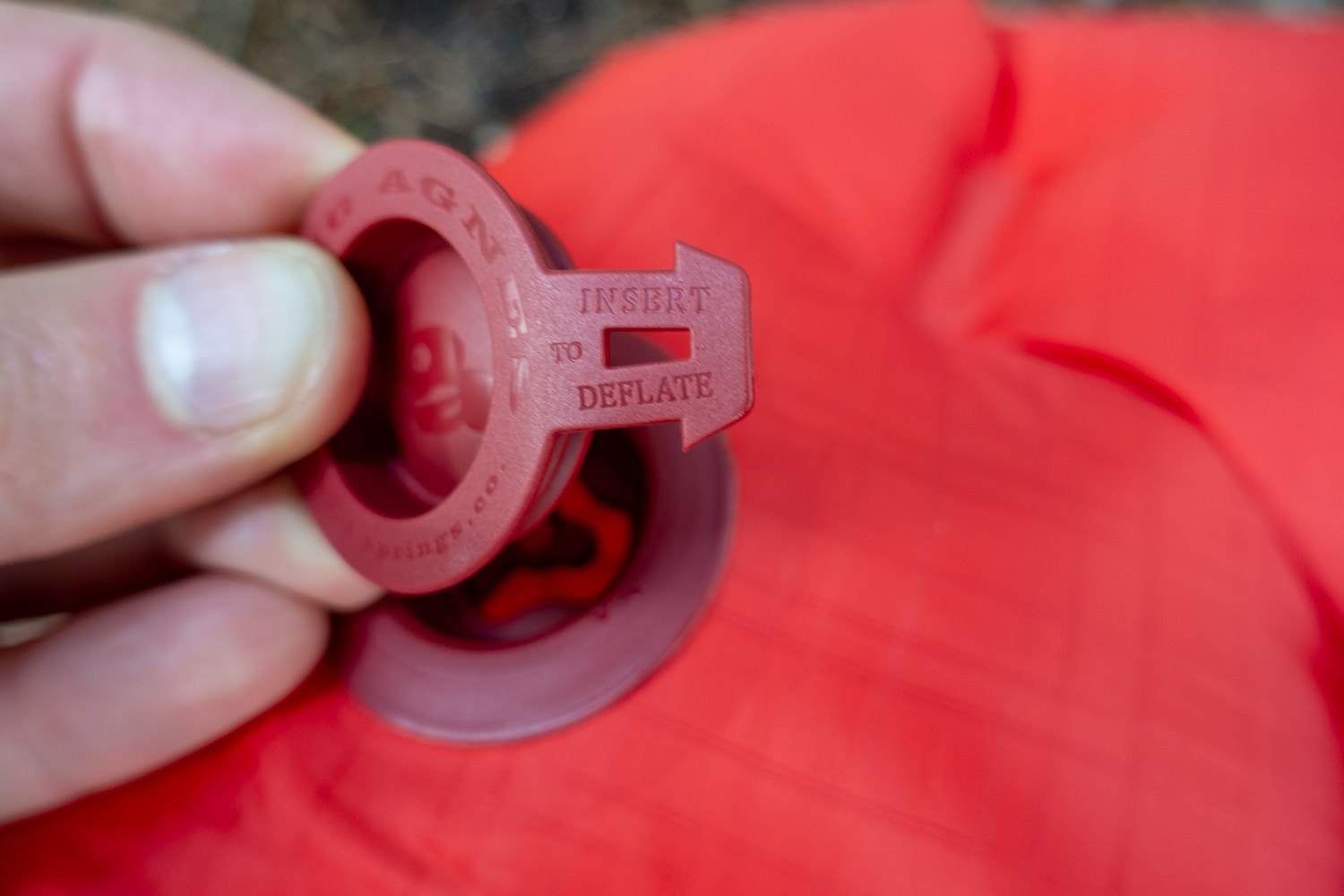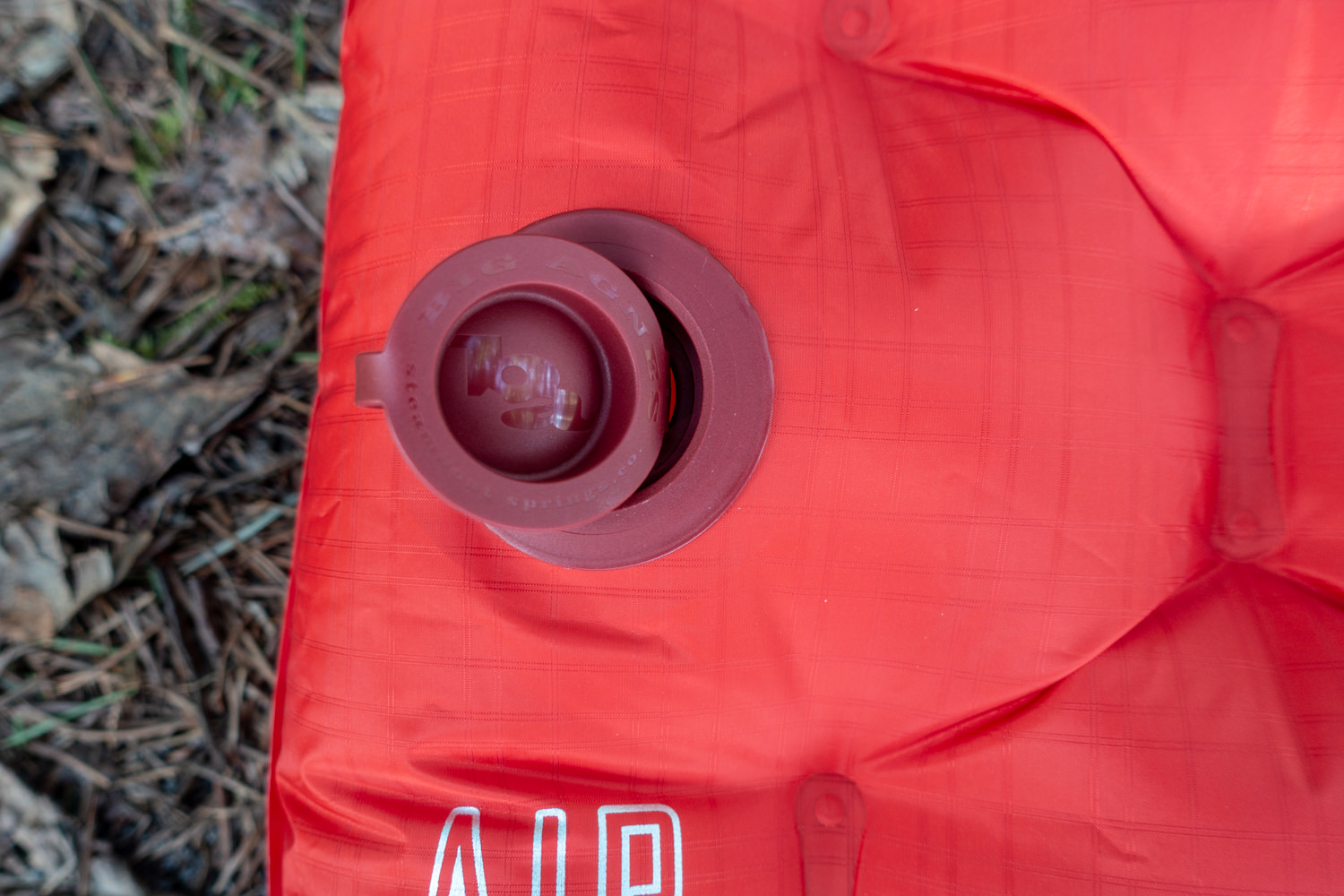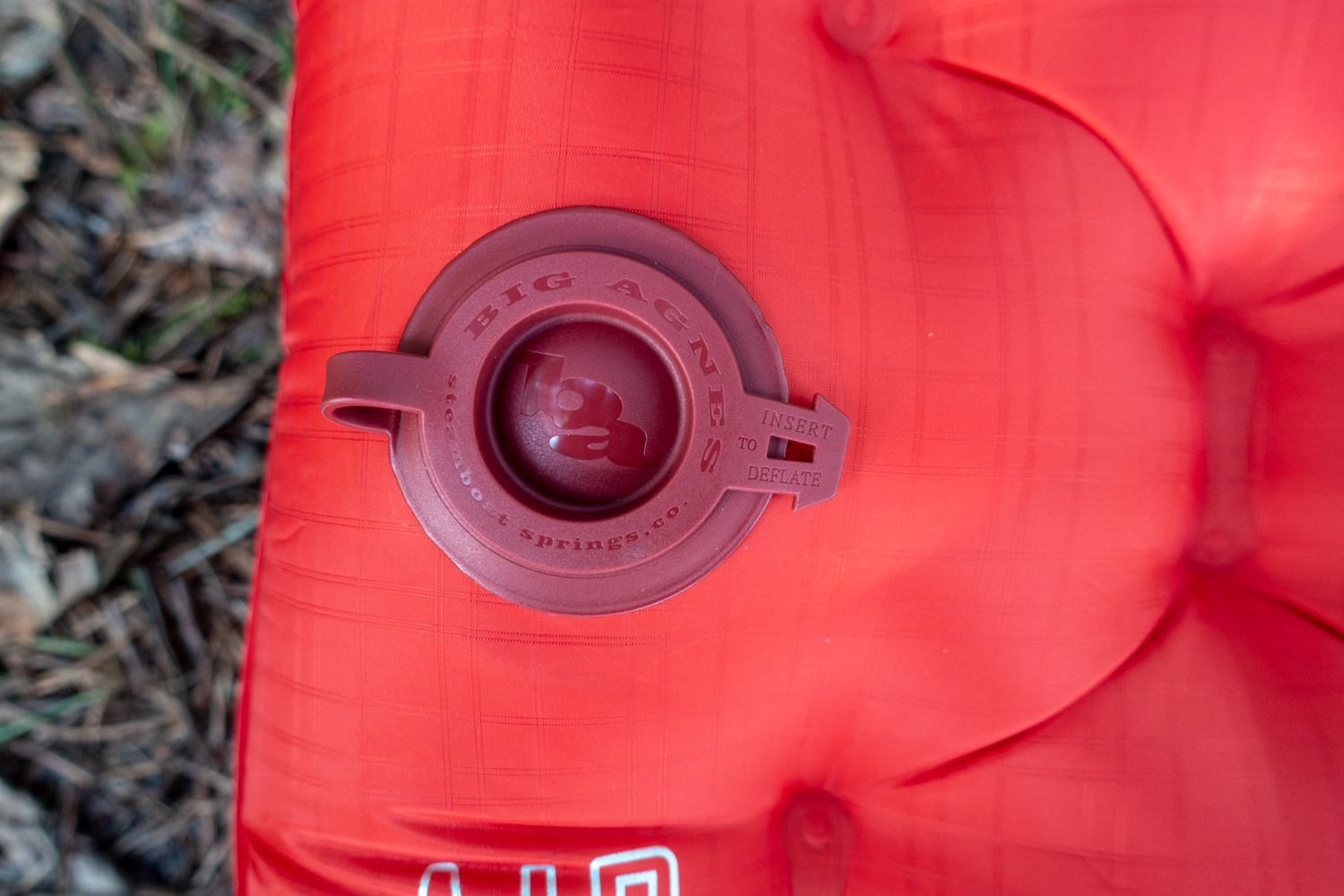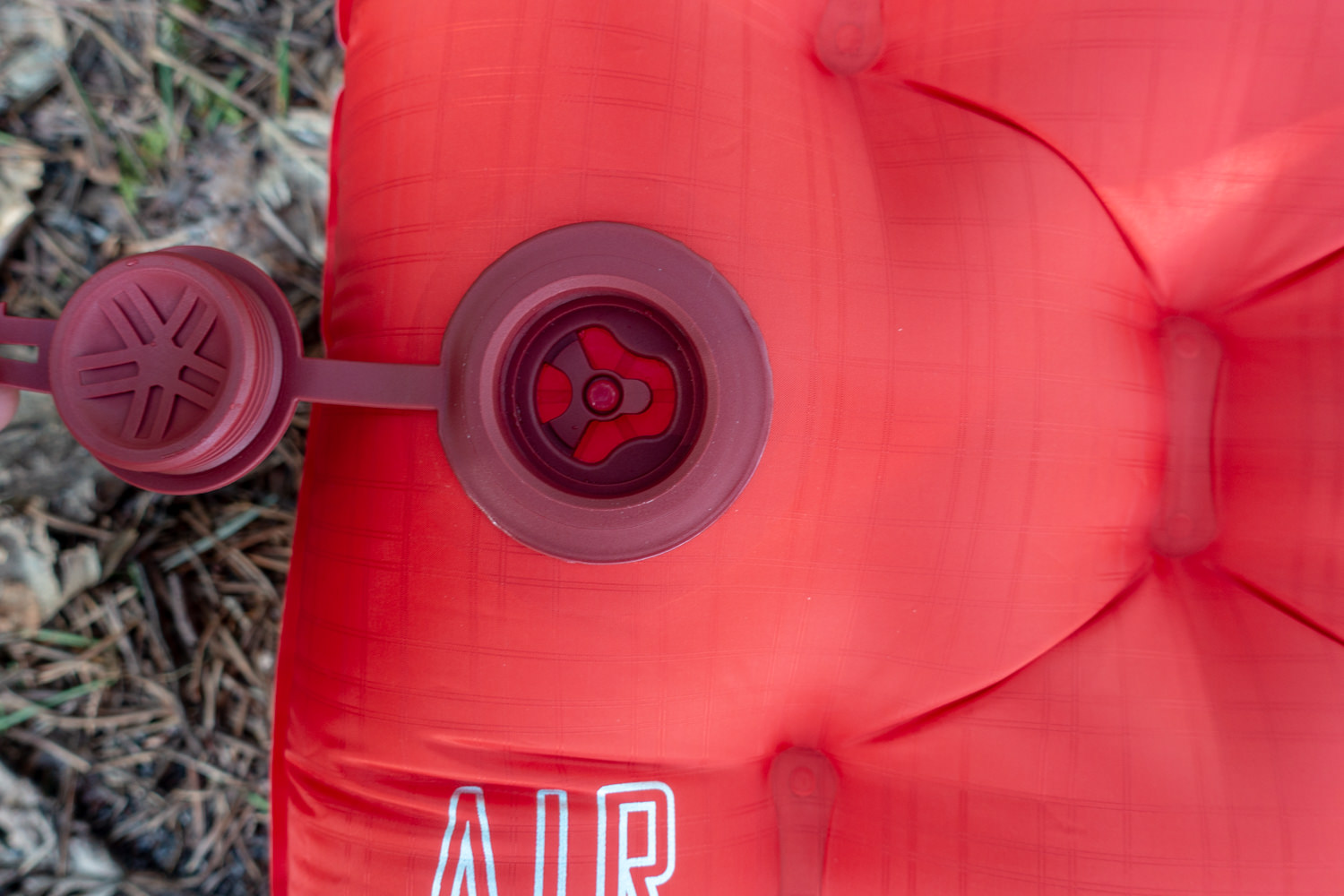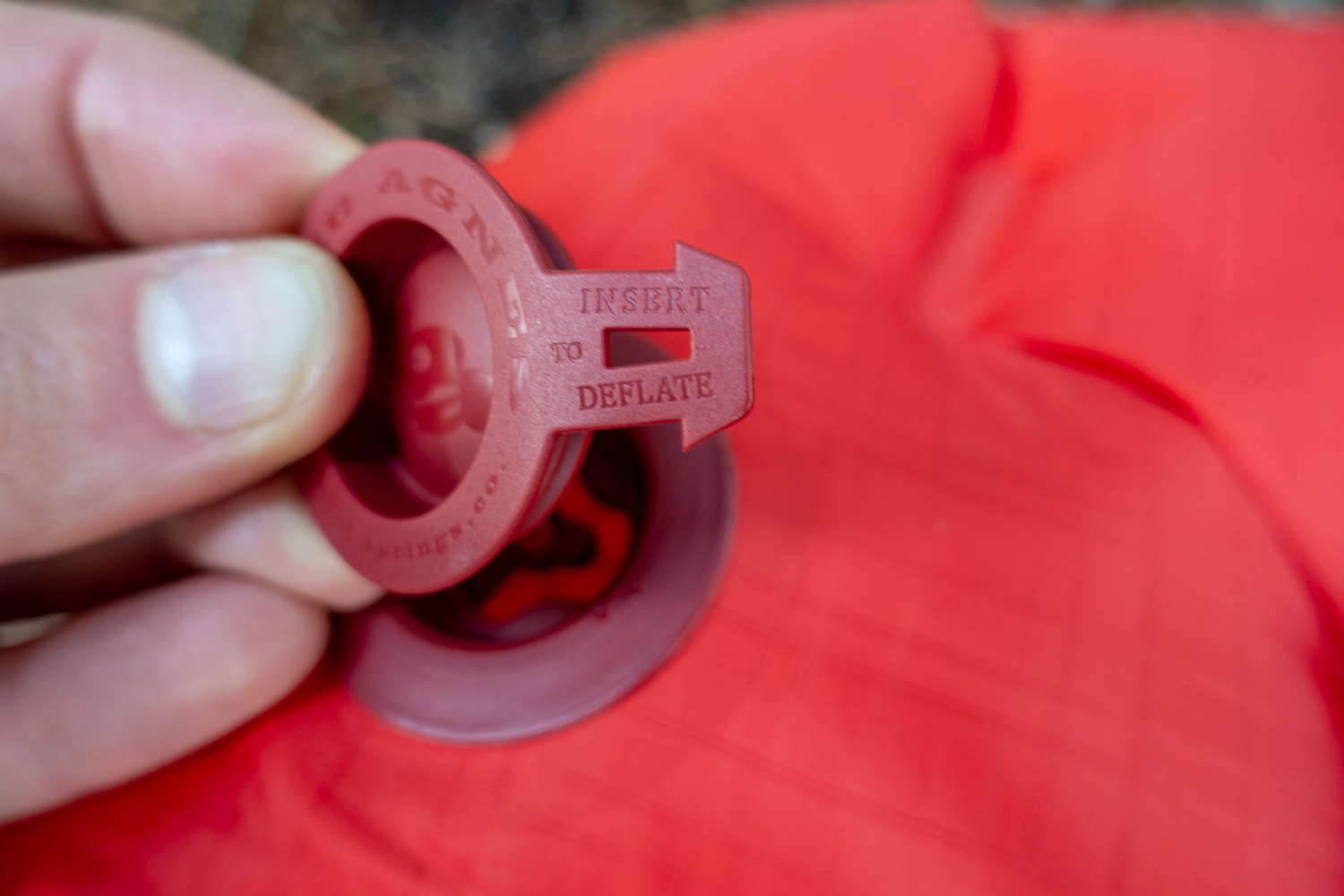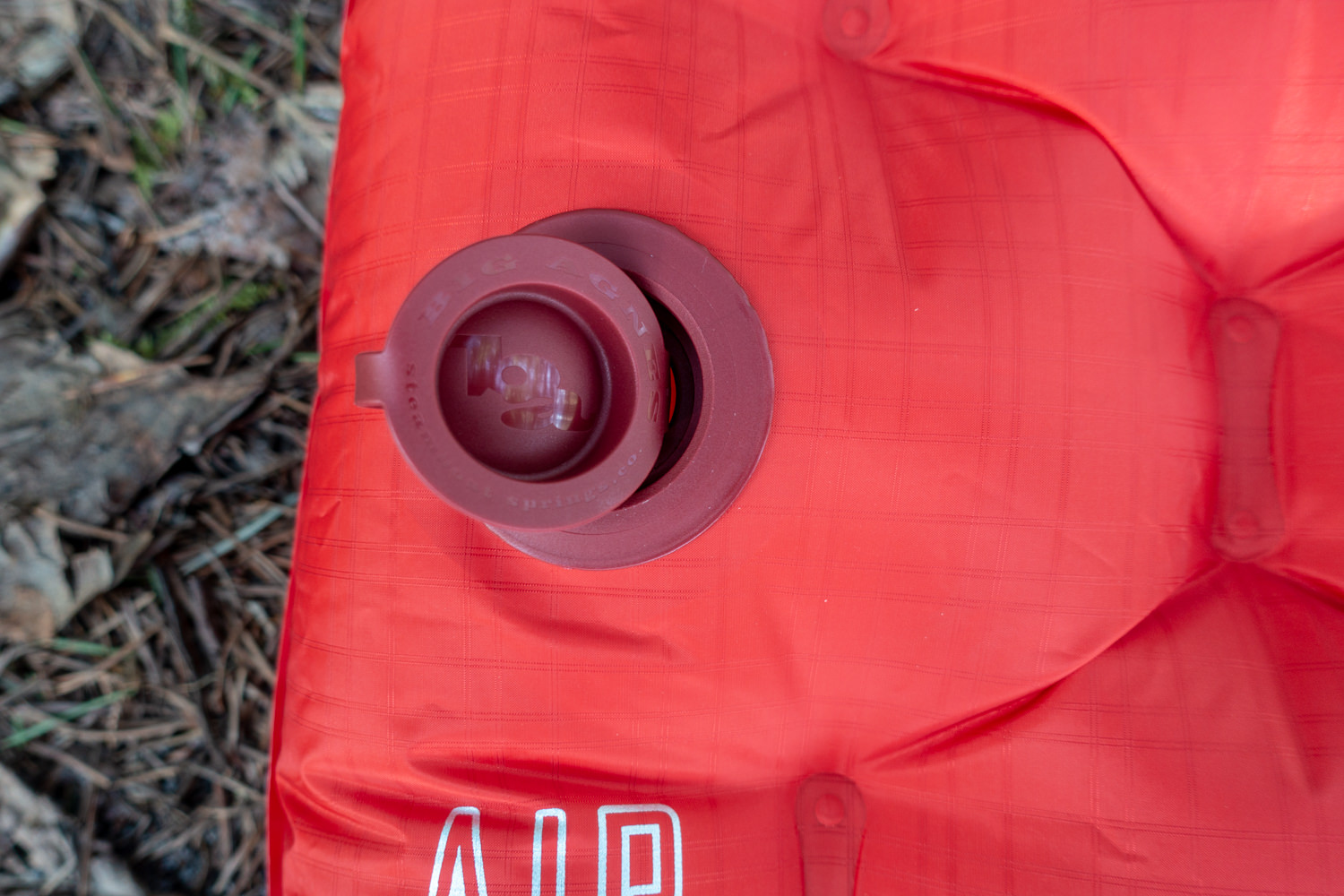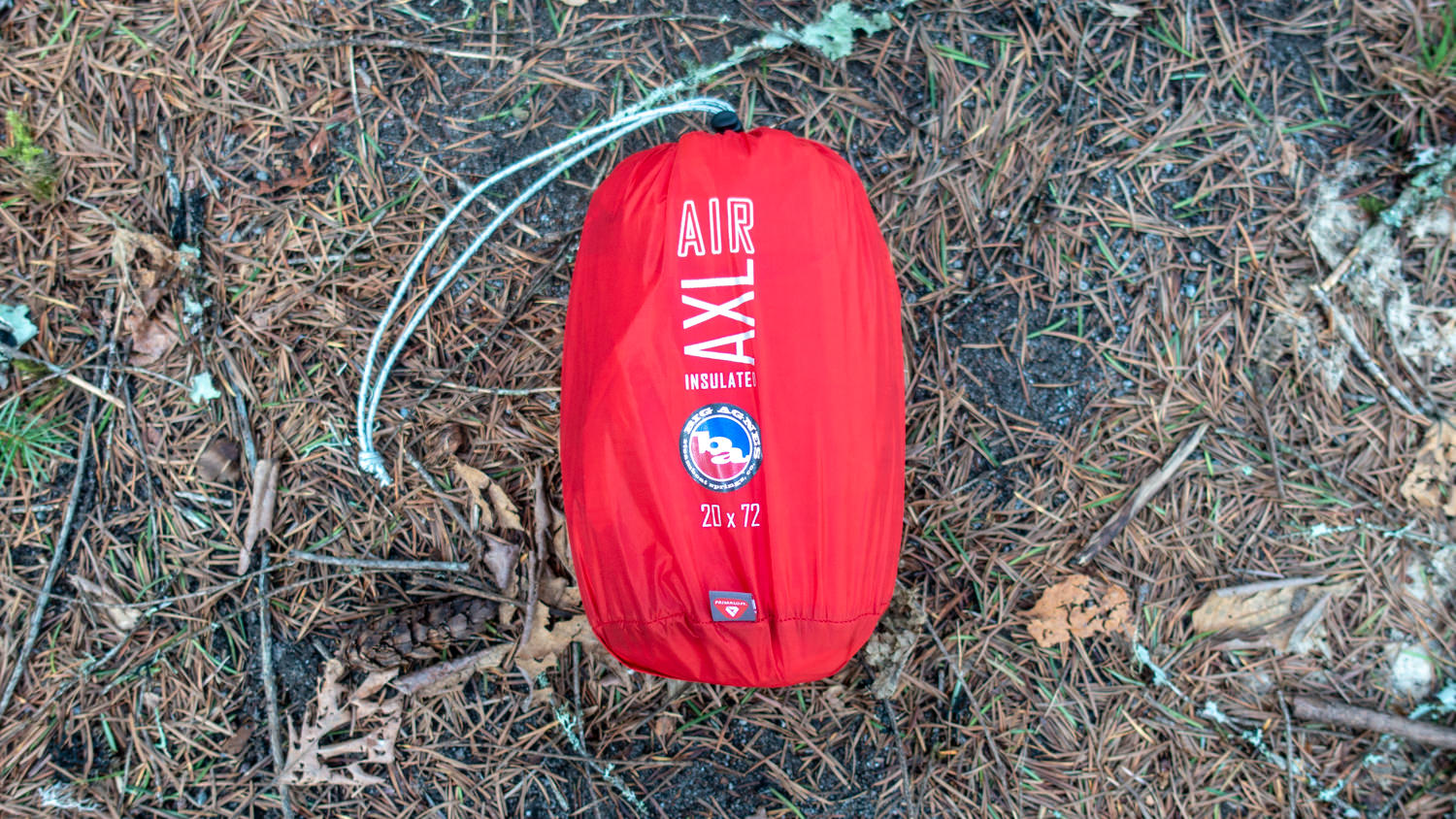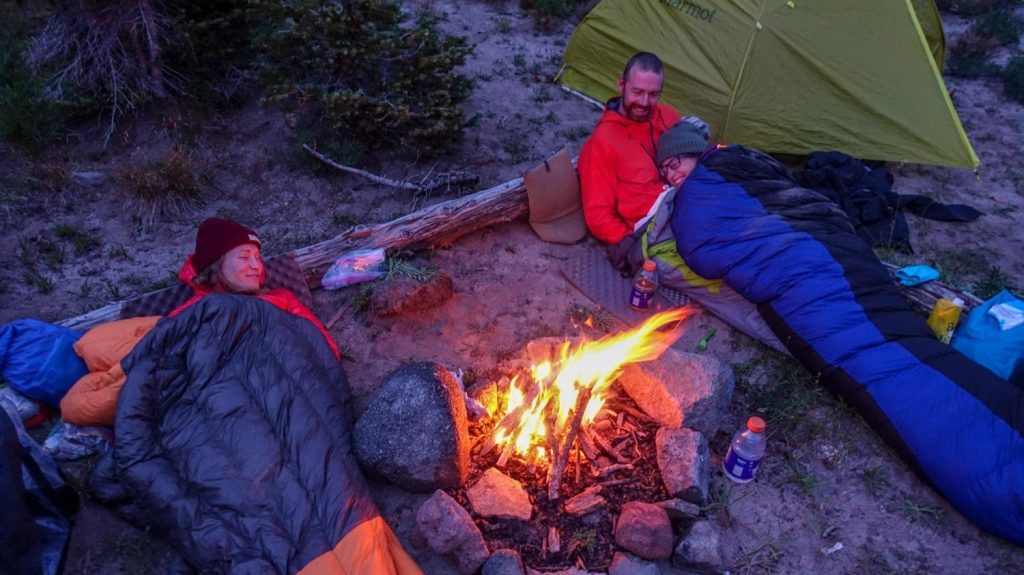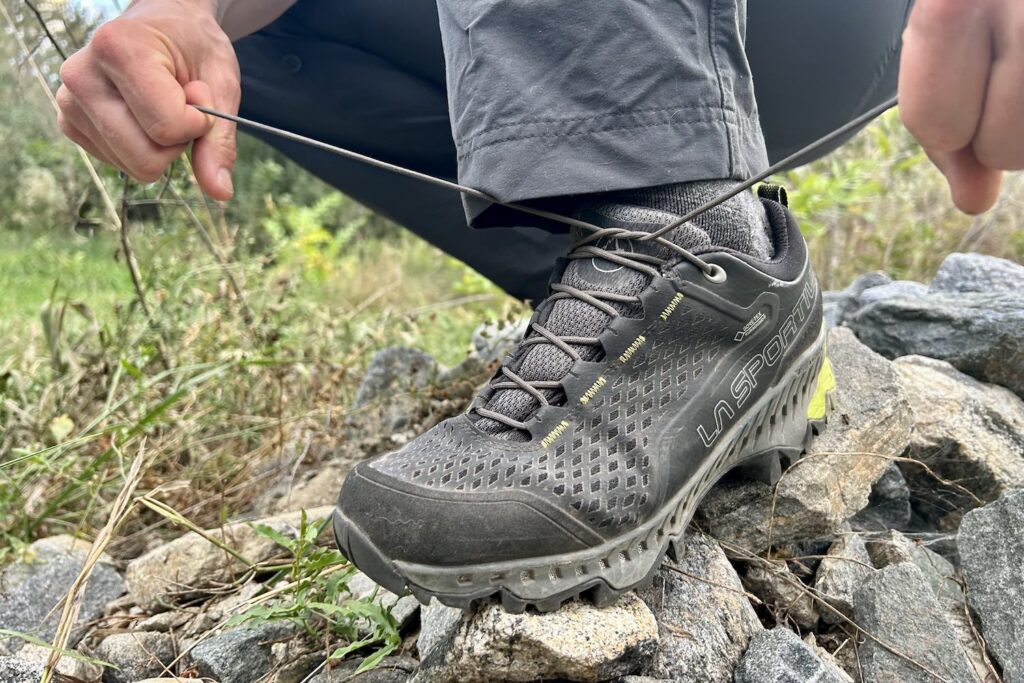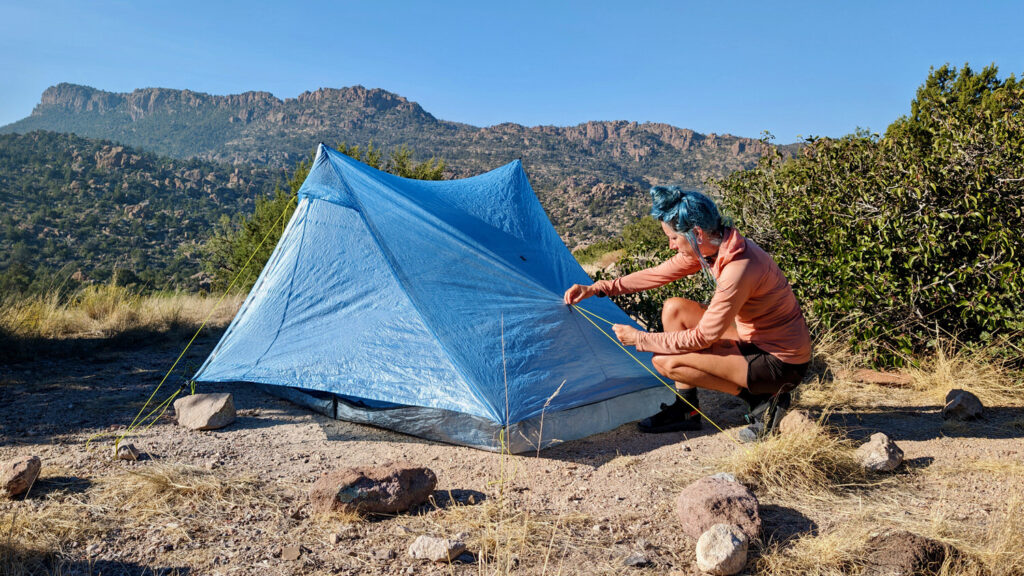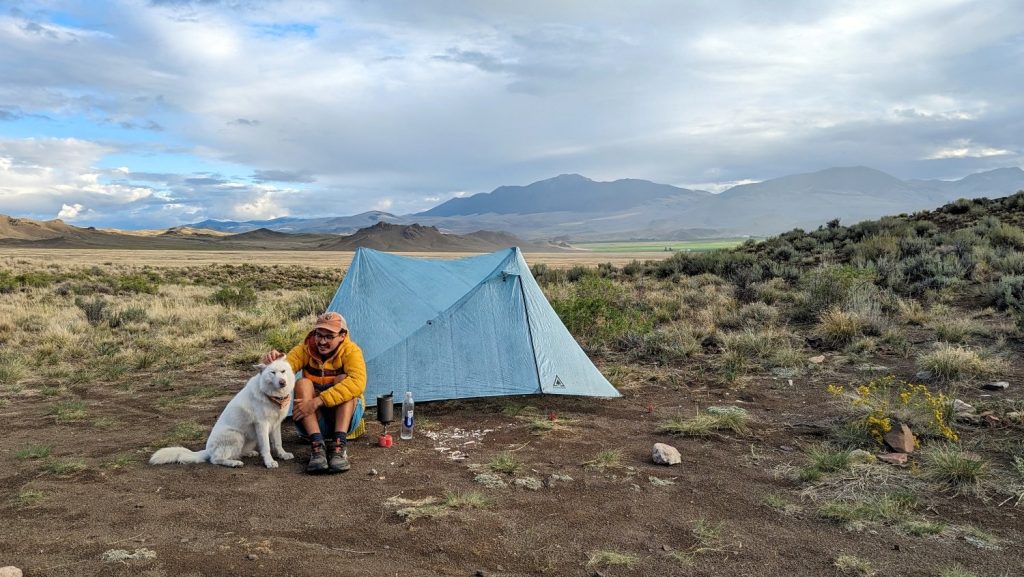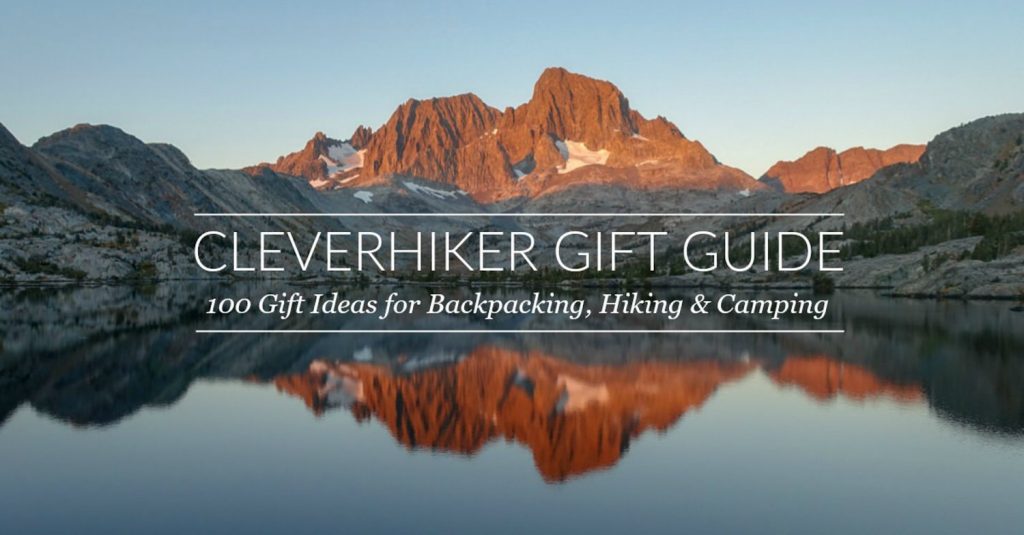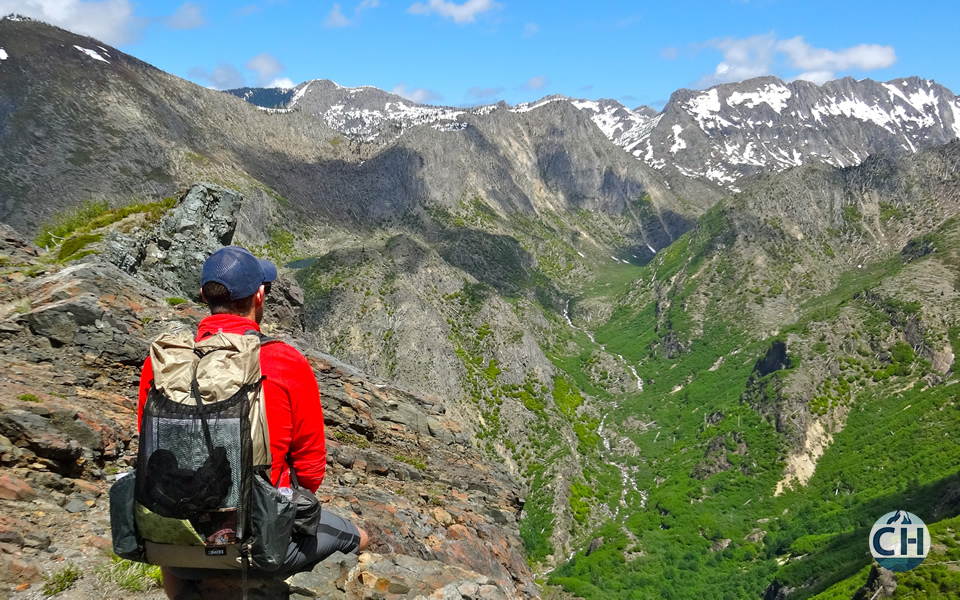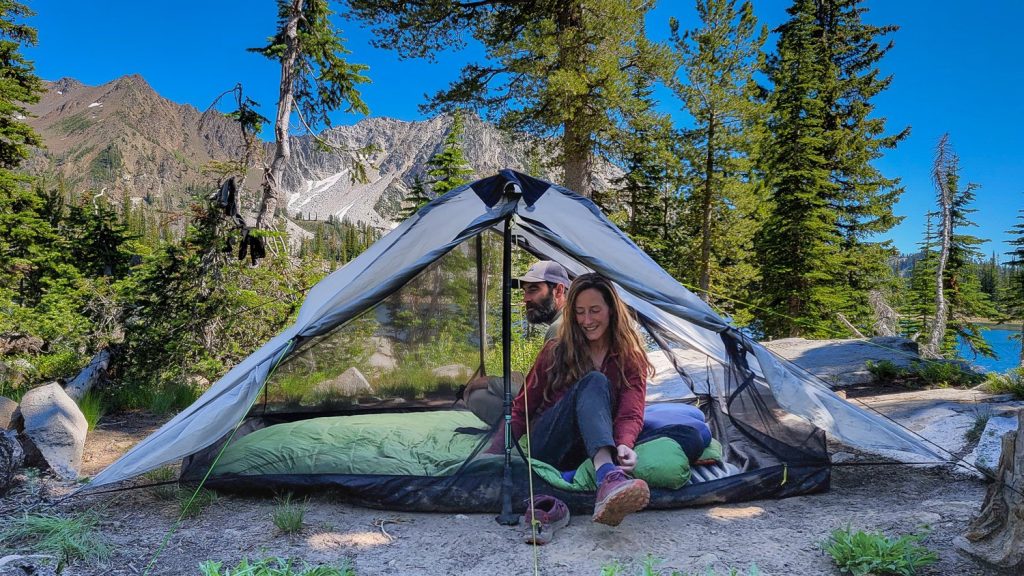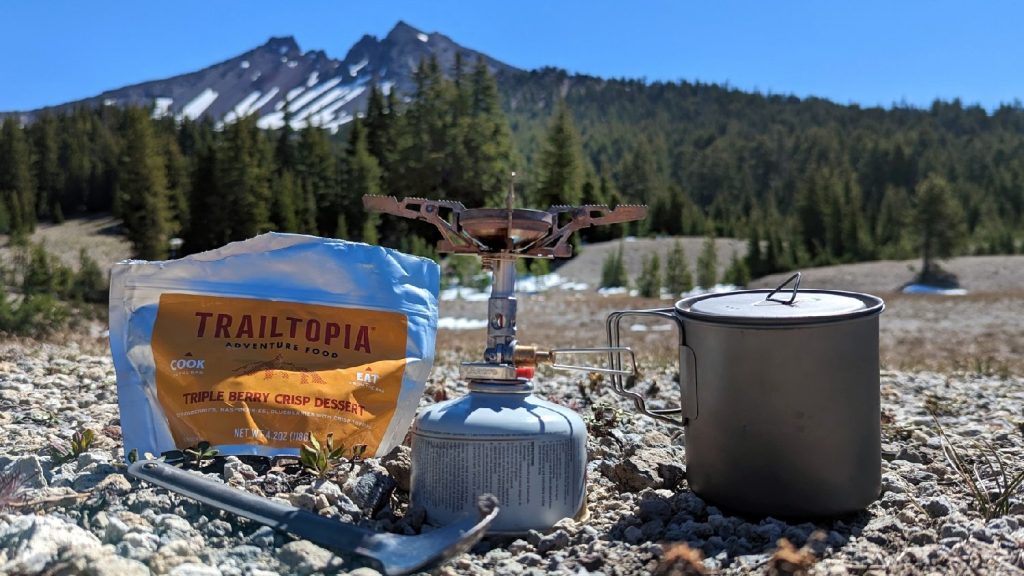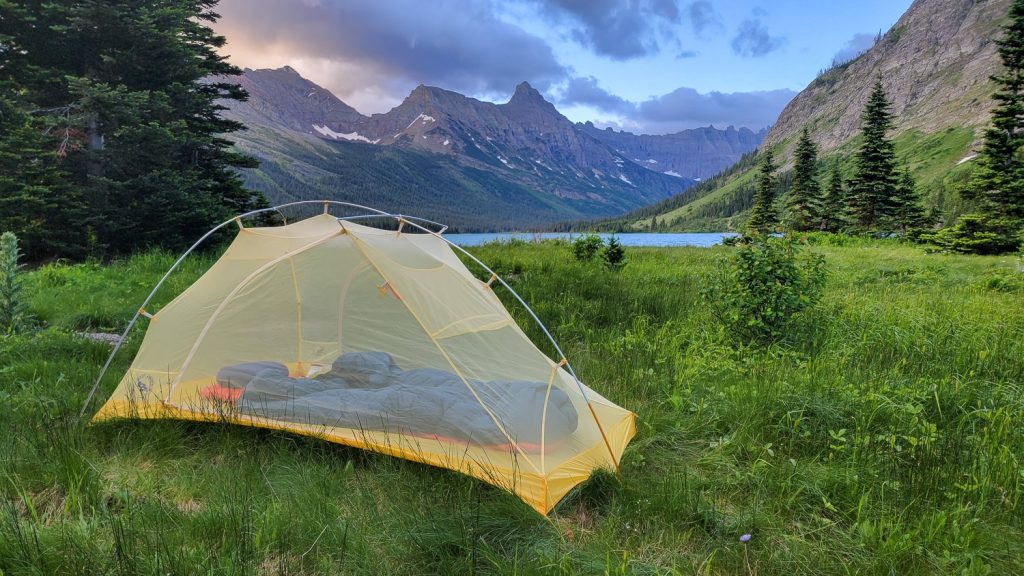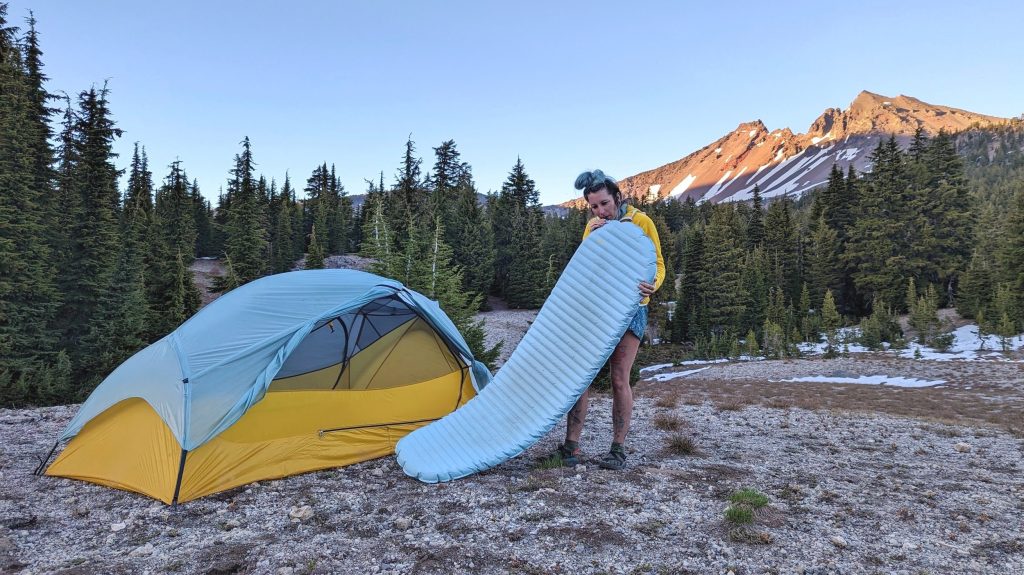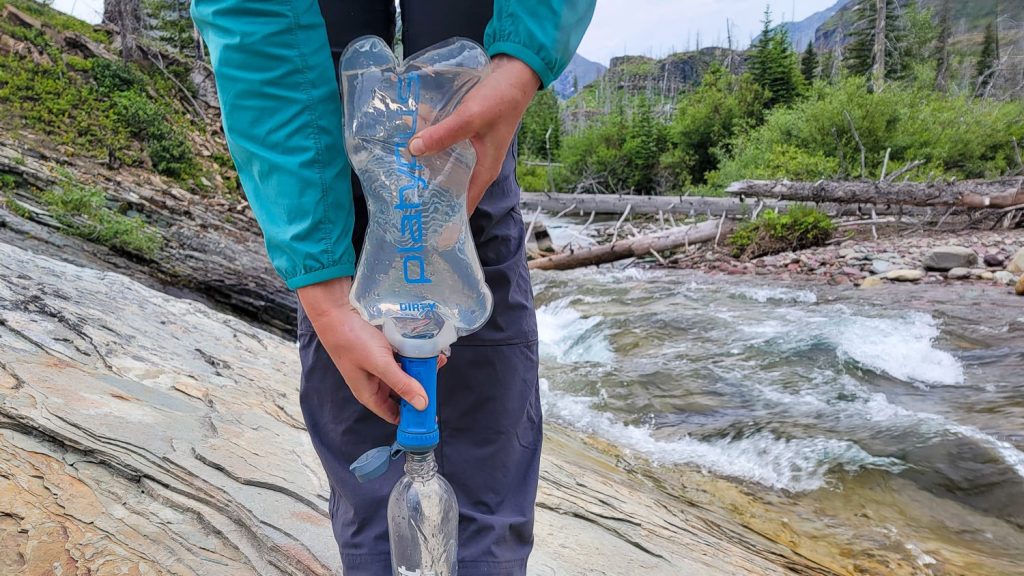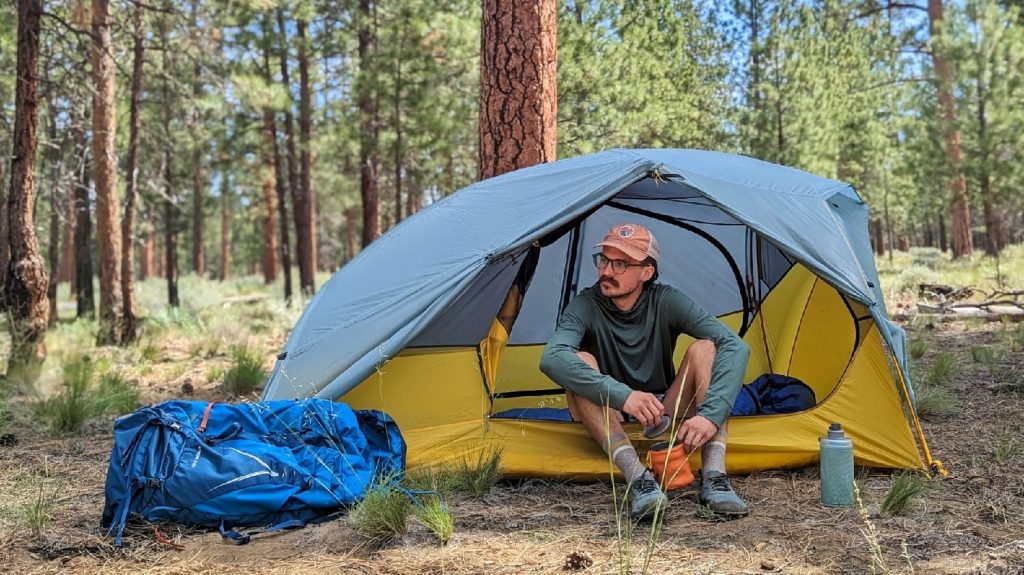One key area where the AXL falls short compared to the XLite is warmth. Big Agnes doesn’t measure R-value (a big downside in our opinion), so it’s hard to say precisely how well the AXL insulates from the cold ground, but we think the XLite is much warmer. BA rates this pad down to 15°F, but that’s a pretty bold claim. Our testing doesn’t back that estimate up and we’d prefer to see an official R-value for the AXL
That said, if you rarely encounter sub-freezing temps on your backpacking trips, you may still get a ton of value from the new Big Agnes AXL Air Pad. Overall, we think the AXL has a lot to offer and certainly ranks among the top backpacking pads on the market
Note: Check out our Best Sleeping Pads page for our top recommendations and critical considerations before buying a new sleeping pad.
Compared to NeoAir XLite
The NeoAir XLite (pictured above) has been our top backpacking sleeping pad for years (find our top pad picks here) and tends to set the industry standard. The AXL weighs a little less, packs down a bit smaller, is slightly less noisy, has larger side baffles to help keep you centered, and is a bit thicker than the NeoAir XLite. For inflation, deflation, and adjustments we think they’re about the same. Warmth is one of the key areas where the AXL falls short compared to the XLite. It’s tough to tell without R-Value testing, but we think the XLite feels much warmer. The fabric thickness on the XLite also feels more durable, and Therm-a-Rest has a long-standing tradition of excellence in sleeping pads (backed by a great warranty). Both are pricey pads, but the MSRP of the AXL is slightly higher than the XLite too.
Sizes and Options
We choose the regular length, rectangular shape AXL pad for this review, but the AXL also comes in mummy, short rectangular, wide rectangular, and long/wide rectangular versions. If weight is a major concern, the mummy version is the lightest by 1.3 ounces. The wide sizes add a few ounces, but may be a good choice for back sleepers and those wanting more room on their pad. Just remember, wide pads require more lung power to blow up and can sometimes be a tight fit in backpacking tents. Find additional sizing and specs here.
Weight
The Big Agnes Insulated AXL Air Pad is among the lightest sleeping pads on the market. The mummy version of this pad weighs a scant 10.6 ounces, which is 1.4 ounces lighter than the NeoAir XLite. The rectangular version we tested weighed 12.1 ounces on our scale (12.9 oz with stuff sack and repair kit). For our backpacking trips, weight is almost always a key consideration, so we view this as a major win for the AXL.
DIMENSIONS
LENGTH
Our AXL measured 73.5 inches long when fully inflated, which is actually 1.5 inches longer than the listed specs. Bonus. Dave is 6’2” and is still able to use the regular length pad, though we wouldn’t recommend the regular length for users taller than that.
WIDTH
We measured the width of the AXL to be 21 inches when inflated, which is also an inch wider than the listed specs. Again, bonus. This pad is also available in “wide” models, which are listed at 25 inches wide (compared to 20 inches wide listed for the regular model).
What pad width you choose will often come down to personal preference and how you sleep. But in general, back sleepers tend to like wider pads that help keep their arms from falling off to the side. Side sleepers tend to be okay with regular width pads. With the AXL, we’ve found that the side baffles help keep our arms on the pad a little bit when lying on our backs, but they still tend to slide off to the side. That said, for backpacking we generally choose regular width pads to keep weight to a minimum.
THICKNESS
The AXL is a very thick and cushy 3.5 inches when fully inflated. Like most pads, when deflated slightly for sleeping comfort, we tend to bottom out when sitting up or putting down an elbow to move around on the AXL. That doesn’t happen when the pad is fully inflated though. Also, don’t forget that more thickness also tends to mean more lung power is required for inflation (or pick up the PumpHouse Ultra).
PACKED SIZE
The AXL packs down incredibly small and has one of the smallest packed size of any pad we’ve tested. The regular version of this pad is 3 X 6.5 inches when packed and the wide version is 3.5 X 8 inches when packed. In order to get this pad back into its stuff sack, you have to fold it twice lengthwise and roll, which isn’t ideal, but it’s also fairly normal for backpacking pads. This is another key strength of the AXL, and we love how small it packs down.
Warmth
One of the most important properties of a sleeping pad is insulation from the cold ground (read our sleeping pad critical considerations guide for more info). Big Agnes states that this pad will work down to 15°F, but they don’t back that up with R-value testing, which is a big downside in our opinion. Fifteen degrees is really freaking cold. That’s 17 degrees below freezing. And though we haven’t tested the AXL down to temps quite that cold, we highly doubt it’s insulation would hold true at 15°F. This type of exaggeration is sadly commonplace in the competitive sleeping pad industry when R-value testing isn’t published. Our more conservative warmth estimate for this pad would be around freezing, or 32°F.
That said, a lot of backpackers don’t hit the trail in sub-freezing conditions. So if you generally backpack in warmer weather (think 30s or 40s at the coldest), this pad might be a great fit. Big Agnes also offers the AXL in an even lighter non-insulated version, but we would only recommend that for summer conditions (think 40s or 50s at the coldest).
Design and Comfort
The AXL has a dimpled design that still leaves enough space so you won’t bottom out when sitting up on a fully inflated pad. The AXL also has slightly larger side baffles to help keep you centered on the pad. We find the dimpled design on the AXL to be very comfortable, but not quite as comfortable as the Sea to Summit pads with a similar dimpled design (but the Sea to Summit pads bottom out fairly easily).
Inflation & Deflation Time
The AXL is thick, cushy, and comfy, but it does require some lung power to inflate. It takes about 17 full CleverHiker breathes to inflate the AXL, which is on par with the NeoAir XLite. This is about double the amount that a laminated through pad, like the Sea to Summit Insulated Mat or REI Flash will require (but they bottom out much easier). As mentioned in the valve section above, deflation times for this pad are also on the lengthy side and we prefer air dump valves to make deflation easier. If you really dislike blowing up sleeping pads and want the fastest possible inflation time, pair the AXL with the PumpHouse Ultra, check out the S2S and REI pads listed above, or try out a Speed Valve pad.
Price
The AXL is priced as a premium sleeping pad, costing a bit more than the industry leading ThermaRest NeoAir XLite. This pad is one of the very few on the market that can actually compete with the NeoAir for weight, comfort, and packed size, so it’s price is not outrageous in our opinion. The AXL is definitely not a budget option, but it could be a good value depending on your needs. View fullsize
Durability
Like many ultralight air pads, the AXL is built using thin materials and could puncture if you encounter sharp sticks or rocks. That’s why we always travel with a pad repair kit (and tenacious tape) no matter what air pad we’re using. Big Agnes doesn’t list fabric thickness measurements for the AXL, but the materials feel a bit thinner to us than most of the sleeping pads on our best mattresses list. That said, if treated with care, we expect the AXL to perform similarly to most ultralight sleeping pads for durability.
Noise
The AXL is priced as a premium sleeping pad, costing a bit more than the industry leading ThermaRest NeoAir XLite. This pad is one of the very few on the market that can actually compete with the NeoAir for weight, comfort, and packed size, so it’s price is not outrageous in our opinion. The AXL is definitely not a budget option, but it could be a good value depending on your needs. View fullsize
Repair Kit
The AXL comes with a small repair kit and instructions. The repair kit includes 3 small patches and a replacement rubber valve insert. A kit like this will repair most small punctures in the field easily and we also always travel with a roll of tenacious tape, which is great for repairing sleeping pads and lots of other gear.
Valve
The AXL has one valve for inflating and deflating. When inflating, the valve allows air in, but not out, which is convenient. The valve also allows for easy firmness adjustments by pressing on the rubber valve gasket to let small amounts of air out. Deflating this pad is not quite as ideal and requires sticking the end of the valve cap into the port to keep it open. While not overly cumbersome, this design is not quite as nice as pads that have a seperate deflation air dump valve. Pads with an air dump valve deflate much quicker and roll up easier for storage.
Conclusion
We think the new Big Agnes Insulated AXL Air Pad has a lot to offer and definitely deserves a spot on our best backpacking pads list. The AXL is among the very few pads that can contend with the industry-leading NeoAir XLite for weight, comfort, and packed size. It’s one of the lightest pads we’ve ever tested and we’ve gotten great trail sleep on it. The biggest downside with the AXL in our eyes is warmth. With no listed R-value, it’s tough to know how well the AXL will insulate us from the cold ground, but we suspect it’s nowhere near the 15°F limit Big Agnes suggests (we think it’s closer to 32°F). That said, not everyone backpacks in sub-freezing temperatures, so if you’re mostly a warm weather backpacker, the AXL could be an excellent fit.


